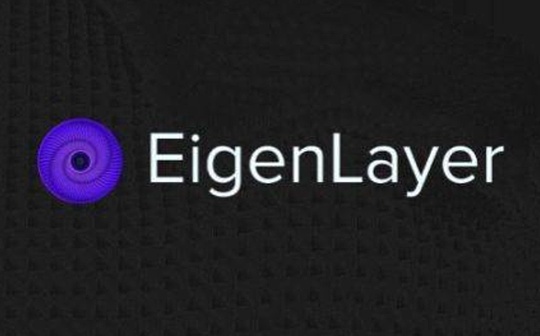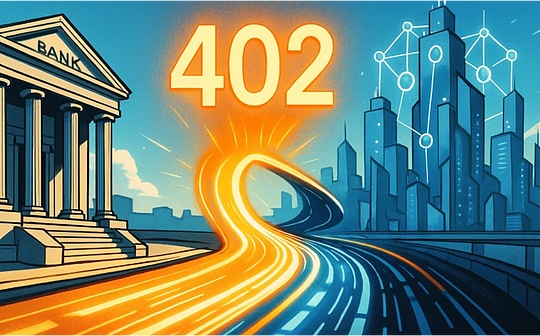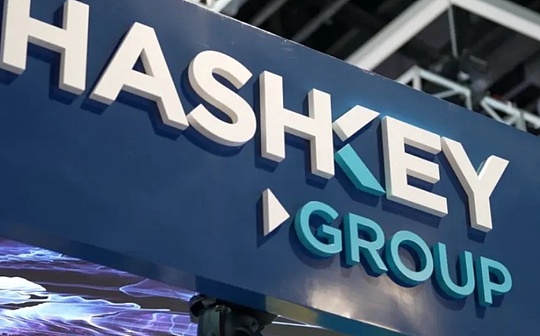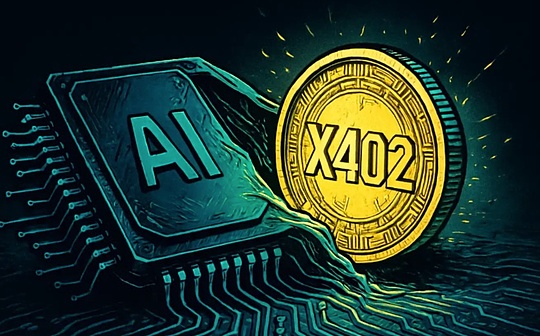
author:HotcoingLobalofficial Source: Medium
Based on the Ethereum network, Eigenlayer proposed that ETH, which is used as Ethereum network to share security and capital efficiency with other agreements, and provides additional interest for the agreement participants.Driven by the concepts of AVS, re -pursuits, and integration systems, a huge ecosystem has gradually formed. From early 2024 to the present EIGENLAYER TVL has increased by 12 times, attracting an investment of about $ 160 million in encryption VC including A16Z, The second place in the total TVL ranking of the DEFI protocol is second only to LIDO.Recently, with Eigenlayer’s main online online, it has caused heated discussion and widespread attention in the industry.
1. Overview of EIGENLAYER
Eigenlayer is a re -pledge agreement based on Ethereum. It allows ETH that the Eto has pledged on the Ethereum network to increase the security of the network by re -pledge.That is, users who pledge ETH can choose to join the EIGENLAYER smart contract to reintegrate their ETH and extend the encrypted economic security to other applications on the network.At the same time, additional benefits will be provided for network participants.This process not only improves the efficiency of capital utilization, but also enhances the overall security of the network.
EIGENLAYER supports the safe operation of other blockchain protocols and applications by using ETH, which has pledged on Ethereum, and this process is called RESTAKING.The pledge allows Ethereum verifications to use the ETH of all or pledged to support other active verification services (AVS), such as bridge protocols, sorters and prophecy machines.These services usually require their own pledge and verification mechanisms to ensure network security, but through the re -pledge function of Eigenlayer, they can obtain Ethereum level security guarantee without attracting a large amount of capital by themselves.
By pledge, the pledge capital of the original single -purpose can support multiple networks at the same time, thereby improving the capital efficiency and security of the entire ecosystem.This mechanism does not require additional native currencies. You only need to use ETH or liquidity pledged tokens (LST), such as STETH, RETH, etc., you can participate in the pledge verification process of AVS.
The characteristics and advantages of Eigenlayer are as follows:
1. Establish a new security sharing mode: The innovation of Eigenlayer is that it brings a new security sharing mode for Ethereum, allowing different blockchain protocols to share Ethereum security infrastructure without the need to establish it by itself.The huge verification node network has greatly reduced the startup cost of the new blockchain protocol.In addition, the pledge also increases the anti -attack capability of the entire network, because attacking any protected agreement needs to overcome the security protection increased by the re -pledge.
2. Improve ETH capital efficiency: The re -pledge mechanism introduced by Eigenlayer has improved the liquidity and use efficiency of capital.At present, the same ETH can serve multiple networks at the same time. While users enjoy the original pledge income, they can also get additional rewards participating in other AVS protocols.The Ethereum network and the entire blockchain ecosystem brought higher flexibility and scalability.
3. Reduce the threshold for participation: Through the re -pledge mechanism, small pledges can also participate in the network security of Ethereum.The pledgers do not need to have a complete pledge threshold of 32 ETH, and individual pledges can also participate through the form of liquidity stake tokens (LST).EIGENLAYER supports LSTH, such as Steth, etc. These token representatives can be freely circulated and used in the DEFI project.
4. Improve the degree of decentralization: By allowing small pledge, Eigenlayer further decentralizes the foundation of network security contributors and reduces its dependence on the pledged.Phenomenon.In addition, Eigenlayer’s design also encourages a wider range of community participation and governance, making the blockchain network more democratic and decentralized.
Second, the design principle of eigenlayer
1. Pure again: In the Eigenlayer ecosystem, the security guarantee sharing with Ethereum is provided by the pledge, which is the basis of the entire EIGENLAYER.Participants re -pledged their ETH on Ethereum to the EIGENLAYER network. These ETHs used to ensure capital and support the security and operation of the network.The pledges will obtain dual income from native Ethereum network verification and AVS.
2. Active verification service (AVS): Active verification service (AVS) uses these re -pledged ETH to enhance its service functions.AVS is a special service or application that runs on Eigenlayer and directly uses these re -pledged funds to provide enhanced network services.These services can include various functions such as calculation, storage, and data processing.The AVS analogy can be the middleware or module, such as new blockchain, DA layer, virtual machine, pre -chain bridge and other items.AVS can provide data services for DEFI, games, and wallets.
3. Rollups: In the Eigenlayer ecosystem, Rollups, as a solution of Ethereum Layer 2, benefits from the modular service provided by AVS.For example, through services such as EIGENDA (Eigenlayer’s Super Data usability), Rollups can realize the super -scale data processing, which greatly increases its ability to process large -scale data.
4. Operators: Operators play key roles in the Eigenlayer ecosystem. They perform various verification tasks, and these verification behaviors depend on the pledged ETH as security guarantee, which is also the basis for AVS dependence.The responsibilities of operators include, but not limited to verifying transactions, implementing smart contracts, and maintaining network security.Their work ensures that AVS can run reliable and provide support for upper applications and services.
5. Guarantee measures: Considering the additional risks that pledge may bring, Eigenlayer has introduced a number of risk control mechanisms.For example, for the security issues that may be caused by AVS, Eigenlayer designed a system called “Disposter Verification Cluster” (DVC) to decentralized risks to ensure that even if some AVS problems have problems, it will not affect the security of the entire network.In order to ensure the normal operation of the network and the security of the pledged capital, Eigenlayer has no mechanism for the pledgee of improper operation.Slashing refers to Eigenlayer to ensure that AVS operators are honest. Vermitters will face the risk of revoking pledge if maliciously act.
6. Integration mechanism: Eigenlayer introduces an internal integration system that grant an EIGENLAYER integration for ETH in EIGENLAYER in EIGENLAYER in EIGENLAY per hour.The purpose of this method is to measure the degree of contribution of users to the network, and reflect the activity and duration of their pledge through the number of points.Although the EIGENLAYER team has not clearly specified the specific use of points, and has not announced any detailed information about starting the EIGENLAYER tokens, many users continue to pledge activities and look forward to token airdrops that may be based on points in the future.This shows that users have expectations and confidence in EIGENLAYER’s future development.
>
3. Eigenlayer pledge method
At present, Eigenlayer supports two re -pledge methods: liquid restAKing and local pledge.
1. Pure the flow again
Allow pledge flow pledge tokens (LST), which is a pledge voucher issued by the LSP (mobile pledge agreement), which represents the rights and interests of the primitive ETH pledge, and can be freely circulated and used in various decentralized finance (DEFI) agreements.Therefore, it does not affect the pledge status and reward collection of pledges on Ethereum.LSP solves some restrictions on Ethereum network pledge. Users can use Capital to participate in Ethereum network verification and receive verification rewards with less than 32 ETH.At the same time, an additional income is generated in the DEFI protocol, or the LST is sold on the market without waiting for the unsubspread period, which effectively provides the same benefits as unpufferer.For example, Lido Finance is currently the most well -known LSP, LIST LSTH issued by Lido Finance is STETH.Eigenlayer accepts user pledge STETH to make it an infrastructure that guarantees AVS security.
Eigenlayer currently supports a total of 12 types of LST for flowing and re -pledge, including STETH, Sweth, Meth, STETH, WBeth, Reth, SFRXETH, CBETH, OETH, LSETH, Ankreth.
EIGENLAYER accepts LST re -pledged deposits in a certain period of time, or restricts the participation authority obtained from Eigenlayer from EIGENLAYer at a certain period of 33%.So far, Eigenlayer’s LST pledge restrictions have increased five times.On April 16th, Eigenlayer announced that it would cancel all LST deposit limits and re -open the deposit window. EIGENPOD re -pledged ETH through EIGENPOD in the EIGENLAYER application.
2. Local pledge
Local pledge is a more direct method. The pledged ETH pledged ETH directly used EIGENLAYER’s smart contract, that is, the Ethereum POS node verifier connected ETH to EIGENLAYER in the network to participate in AVSThe verification process.The implementation of local pledge requires at least 32 ETH, and participants need to directly manage a Ethereum node. This provides a higher entry threshold than flow pledge.
Since ETH is directly used in Eigenlayer’s smart contracts, local pledges provide high security.The pledge assets are directly exposed to the punishment standards of Ethereum and AVS, increasing capital protection.Compared with the pledge of flow, local pledge does not involve any intermediate tokens, which reduces the risk caused by poor token fluctuations or poor management.However, its disadvantage is that the liquidity of funds is low, and unlocking and transfer of assets may take longer.
Fourth, eigenlayer ecological status and project inventory
At present, the Eigenlayer ecosystem has begun to support a variety of AVS, and integrated with multiple well -known DEFI protocols and other blockchain services.It allows different types of pledge certificates (such as LST and local ETH) to support these services, so that capital is more effective.
On April 10th, Eigenlayer announced the official launch of the blockchain main network. This release is also accompanied by the data availability (DA) service EIGENDA launched by the EIGENLAYER team.At the end of February, A16Z announced that it would invest 100 million US dollars in EIGENLAYER, making it an encrypted unicorn with a valuation of 10 billion yuan.As of April 18, according to Defillama data, Eigenlayer TVL has exceeded $ 12.8 billion.
As of April 18, Eigenlayer has distributed about 4.2 billion points to all pledges.The transaction price of each EIGENLAYER points for Whales Market outside the field trading market is $ 0.165.
>
(1) Eigenlayer Ecological AVS project inventory
Currently, there are 13 AVS announced by Eigenlayer.EIGENDA, as the first AVS, was developed by Eigen Labs to help other blockchain protocols to store transaction data and other information.AVS other than EIGENDA will be able to use the agreement to “register”, but they are not yet fully deployed.
>
1. EIGENDA: EIGENDA is the first AVS on Eigenlayer. It provides Rollups with high -efficiency and large -scale throughput of data availability services.Through the shared encrypted economic security provided by Eigenlayer’s re -pledges, EIGENDA makes ROLLUPS cost lower and higher efficiency when processing large -scale data.On April 18th, Eigenlayer announced that it had reduced the pledge threshold of the EIGENDA verification node from 320 ETH to 96 ETH.Eigenlayer said the change will allow more new verification nodes to participate in EIGENDA’s AVS verification services.
2. AETHOS: AETHOS is a smart contract policy engine. It abstracts pre -transaction computing and maintains decentralization characteristics.AETHOS has simplified the front process of smart contracts to make the contract execution more efficient and secure.
3. Altlayer: Altlayer is a decentralized layer network, designed for ROLLUPS.It uses EIGENLAYER to achieve fast final certainty and ensure the availability of data through EIGENDA, thereby optimizing the interoperability and performance of Rollup.
4. Blockless: Blockless is a verifiable computing engine that is economic incentives by re -pledged the mechanism.It provides a decentralized verification platform for complex computing, which enhances the transparency and credibility of the calculation results.
5. Drosera Network: Drosera Network created a powerful and rapidly responding first -sound collector by re -pledge, focusing on decentralized verification.This provides a new way for emergency response and security verification for the network.
6. Espresso: Espresso is a decentralized serialized service. It is re -pledged to realize the alignment of Ethereum and strong economic security.It guarantees the order and consistency of transaction execution.
7. ETHOS: ETHOS is a safe coordination layer. Using the re -pledged ETH security to support COSMOS.It enhances the safety and efficiency of cross -chain interaction.
8. Hyperlane: Hyperlane uses EIGENLAYER to enhance the security of the news of the developer of the chain, and provides a guarantee for the economic security of re -pledges.
9. Lagrange: Lagrange created a safe and scalable light client by re -pledge, dedicated to OP RollUps.It improves network access and response speed through light clients.
10. NEAR: Near aims to build a fast and final certainty layer to improve the combination and liquidity in the Rollup ecosystem in the Ethereum.This helps improve the efficiency of cross -rollup operations.
11. OMNI: omni is a low -delayed interoperability network. By reintegrating all Ethereum RollUps to ensure the security and efficient operation of the entire network.
12. Silence Laboratories: Silence Laboratories is constructing a multi -party computing (MPC) authentication library and SDK. These libraries and SDK have nothing to do with technology stacks and devices, which improves the security and flexibility of the network.
13. Witness Chain: Witness Chain is a monitoring network using re -pledge to prove it, focusing on the security and proof position of rollup.By providing the function of providing diligence and position, it enhances network monitoring and verification capabilities.
(2) EIGENLAYER Ecological Rollups project inventory
The Rollups project uses EIGENLAYER’s technology to achieve fast final and efficient data availability, and further expand its blockchain solution. There are currently 9 integrated Layer 2 solutions.Among them, Altlayer is both AVS and the Rollup project.
>
1. Caldera: Caldera is a modular blockchain platform that allows developers to deploy Rollup with EIGENDA services with one click.By simplifying the deployment process, this platform greatly reduces the technical threshold of developers, so that more innovation and applications can be launched quickly.
2. Celo:Celo 原本是一个独立的一层网络,现在正在使用 EigenDA 转型为以太坊的二层 Rollup。Through this change, Celo can better integrate into the Ethereum ecology while improving the performance and scalability of its network.
3. Cyber: Cyber is a modular two -layer network designed for social and large -scale use. Use EIGENDA to optimize data processing and user experience.Cyber 的目标是通过高效的数据服务,促进区块链技术在社交媒体领域的应用。
4. Layer N: Layer N is a second -layer network designed for accelerating decentralized finance (DEFI). It also uses EIGENDA to improve data processing capabilities.通过这种技术支持,Layer N 旨在为 DeFi 应用提供更高的效率和更好的扩展性。
5. Mantle:Mantle 由 BitDAO 开发,是一个使用 EigenDA 的模块化 Rollup。这个项目通过结合 BitDAO 的资源和 EigenDA 的技术,为用户提供了一个高效且功能强大的区块链平台。
6. Movement: Movement network consists of a series of modular blockchain based on MOVE language, and also uses EIGENDA technology.This design enables Movement while providing flexibility while ensuring efficient processing and security of data.
7. Polymer Labs: Polymer Labs is a Rollup combined with COSMOS SDK and OP stacks. It uses EIGENDA for data availability services and settlement of Ethereum.This multi -technology integration solution provides a variety of application scenarios and powerful network support for its users.
8. Versatus:Versatus 是与 EigenDA 合作的项目,旨在引入全球首个无状态 Rollup 到以太坊生态系统中。This innovative Rollup design brings new development potential to Ethereum ecology through efficient data processing and unique network structure.
(3) Eigenlayer Ecological LRP related project inventory
The flow -re -pledge protocol (LRP) is a key component in the Eigenlayer ecosystem, which aims to attract and increase user participation in a flexible and efficient way.LRP allows users to deposit in ETH or LST (mobile pledge tokens) and represent users on Eigenlayer for re -pledge, which provides users with a more flexible way to participate in the EIGENLAYER ecosystem.Users can choose to re -pledge through the LRP platform without directly participating in the complex pledge process, including earning Eigenlayer points and additional points provided by the platform.
In order to prove users’ deposits and participation, LRP will issue LRT, which represents the user’s pledge share in LRP.LRT not only serves as a certificate of the holder’s assets, but also freely trades in the DEFI market to provide additional liquidity and income opportunities, so as to further increase the income on the basis of Eigenlayer points.Representative LRT -related projects include Ether.Fi, KELP DAO, EIGENPIE, Pendle Finance, Gearbox, etc.
1. Ether.fiTheEther.fiAs a member of the Eigenlayer ecosystem, it started as part of LSP, but it soon showed its application breadth in the field of DEFI through its innovative Eeth and WEETH tokens.Through the repurchase mechanism and rewarding design, these two tokens not only ensure the compatibility with the mainstream DEFI protocol, but also enhance the user’s participation and the liquidity of the pledged asset through the Eigenlayer points farm.
2. KELP DAO: Kelp Dao provides users with a unique re -pledge solution and Kelp Miles integration system to provide users with an attractive pledge and re -pledge scene.Its development reflects the efforts of the LRP ecosystem in improving user experience and reducing transaction costs, especially when high GAS costs and network congestion often hinder user experience.
3.EIGENPIE: Eigenpie, as part of the MAGPIE ecosystem, focuses on aggregating governance tokens and affecting DEFI protocol decisions.Its strategy is to disperse risks and optimize the liquidity and use of tokens through independent re -pledge methods.This is particularly critical for the long -term sustainable development of promoting the agreement.
4. PENDLE Finance: Pendle Finance andEther.fiCooperate, launchEther.fiEETH is the first LRT available on its platform.Ether.fiA system is designed to allocate EIGENLAYER points andEther.fiLoyal points.This enables users to buy YT-EETH (its price is getting cheaper) and accumulate interest and points until this date.
5.Gearbox: Gearbox is a leveraged income agreement. The borrower has leveraged their position through the deposit of pledged assets in the credit account and the asset borrowed from the agreement.Gearbox launched a leveraged points strategy through cooperation with the LRP agreement.Gearbox allows accumulating EIGENLAYER points and LRP local points in credit accounts, and sent to the borrower’s wallet to provide users with up to 9 times leveraged points.
5. Eigenlayer ecological risk and challenge
Eigenlayer, as a re -pledged layer built on Ethereum, provides innovative solutions for blockchain technology, but also accompanied by many risks and challenges.
1. Technical implementation risk: Eigenlayer’s implementation highly depends on complex technical solutions, including the stability and security of smart contracts.Smart contract vulnerabilities or protocol level security issues may lead to serious capital losses.In addition, because EIGENLAYER is directly combined with Ethereum’s node ecology, the imperfect execution of any technical execution may affect its overall safety and efficiency.
2. Market Acceptance: Although Eigenlayer provides an innovative re -pledge solution, market acceptance is still an important uncertainties.The volatility of the encrypted market may affect the value of pledged assets, and the degree of acceptance of the market’s emerging technology will directly affect the liquidity and widely used application of Eigenlayer.
3. Risk of centralization: The re -pledge mode may lead to the concentration of capital to a few high -efficiency verifications, which may further exacerbate the centralized trend and form market monopoly, which pose a threat to the principle of decentralization of Ethereum ecology.
4. The possibility of consensus division: If the operation mode of Eigenlayer is directly involved in the node ecosystem of Ethereum, it may affect the social consensus of Ethereum.If it is not handled properly, it may lead to community division or even chain fork.
5. AVS risk: Eigenlayer provides additional functions and services through its AVS (active verification service), but the security and efficiency of these services depend on the reliability and technology implementation of operators.Any operational failure may cause losses to the pledged ETH.For AVS, which requires very high network security, then the pledges may not provide sufficient protection, which may affect the trust and adoption rate of these services.
6. EIGENLAYER ecological development outlook
Eigenlayer has gradually evolved from the concept of sharing Ethereum network security and generating additional income to a huge ecosystem to meet the needs of infrastructure builders and investors.Essence
1. Expansion ofAVS: Following EIGENDA, Eigenlayer will introduce more AVS to provide more customized services, such as enhanced data processing capabilities, more efficient transaction verification, etc., thereby expanding its scope and influence.
2. Enhancement of security: By implementing advanced security measures and audit mechanisms such as no mechanism, the operation of AVS is not affected by malicious attacks or vulnerabilities.
3. Cross -chain integration: Development of cross -chain solutions allow EIGENLAYER not only to serve Ethereum, but also operate with other major blockchain to enhance its market applicability and user base.Cooperate with more blockchain and encryption projects to achieve technological interoperability and improve overall network efficiency.
4. Ecological system expansion: Establish a cooperative relationship with more ecological projects such as DEFI, DAO, and NFT platforms, and bring value to these platforms by providing efficient recreation solutions.
5. Integration of emerging technology: Explore the possibility of combining emerging technologies such as artificial intelligence and the Internet of Things with EIGENLAYER technology to open up a new application model.
6. Competition and cooperation: LIDO, as Ethereum’s largest liquidity pledged agreement, not only pledged the most ETH, but also many node operators. Perhaps these direct interest conflicts of EigenLayer and Lido will also make LIDO re -think of business models and cocoa.Continuous, and Eigenlayer also needs some time to gradually make up for the missing modules.
As more and more blockchain and encrypted projects are seeking to reduce startup costs through shared security models, the re -pledge model of Eigenlayer may become an important direction for future blockchain network security architecture.In addition, it may also promote the emergence of new economic models and investment opportunities, especially in the field of DEFI and cross -chain operations.Not only bring innovation and value to the Ethereum network, but also provide motivation and direction for the entire blockchain ecosystem.
HOTCOIN is very concerned about the development of Eigenlayer ecology and re -pledges. It has launched high -quality assets such as Alt, ETHFI, Omni, Near, Cyber, Pendle.Come -encrypted investment came to HOTCOIN, the hottest high -quality assets are the first to reach, and one step is fast!








